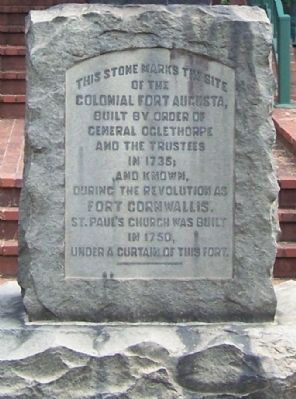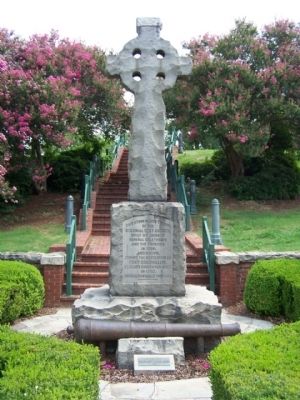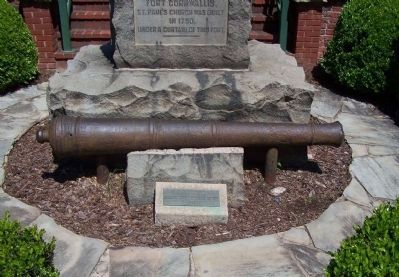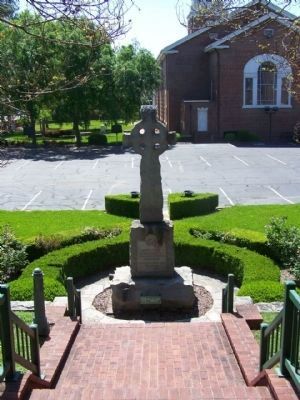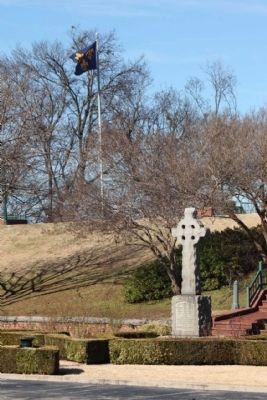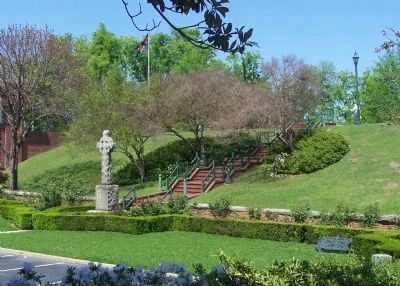Augusta in Richmond County, Georgia — The American South (South Atlantic)
Fort Augusta
Erected 1901 by Georgia Society of Colonial Dames of America.
Topics and series. This historical marker is listed in these topic lists: Churches & Religion • Colonial Era • Forts and Castles • War, US Revolutionary. In addition, it is included in the The Colonial Dames of America, National Society of series list. A significant historical year for this entry is 1736.
Location. 33° 28.589′ N, 81° 57.646′ W. Marker is in Augusta, Georgia, in Richmond County. Marker is on Washington Street (6th Street). Located near the bank of the Savannah River, rear of the parking lot of St. Paul's Episcopal Church Reynolds and Washington Streets. Touch for map. Marker is in this post office area: Augusta GA 30901, United States of America. Touch for directions.
Other nearby markers. At least 8 other markers are within walking distance of this marker. Railroads (here, next to this marker); The Colonial Church of Augusta (a few steps from this marker); Five Indian Nations (a few steps from this marker); Washington's Southern Tour (within shouting distance of this marker); U.S. Marshal Robert Forsyth (within shouting distance of this marker); Fort Augusta ~ Fort Cornwallis / St. Paul's Episcopal Church (about 400 feet away, measured in a direct line); Colonel William Few, Jr. (about 500 feet away); Major Ferdinand Phinizy (about 500 feet away). Touch for a list and map of all markers in Augusta.
Regarding Fort Augusta. As Fort Cornwallis: American Patriots began building the tower on the evening of May 30, protected from the British's sight by an old wooden house. The tower was completed June 1, high enough to overlook the wall of Fort Cornwallis.
British then mounted two cannons inside Fort Cornwallis to fire upon the tower, but they were never able to disable the tower's 6-pounder. The two cannons were quickly disabled by the tower's gun. It is said one of the British cannons is located near the Celtic Cross marker at St. Paul's.
Related marker. Click here for another marker that is related to this marker. To better understand the relationship, study marker on Mayhem Tower
Also see . . . Fort Augusta & Fort Cornwallis. A Celtic cross on the grounds of St. Paul's Episcopal Church in Augusta notes
the site of Fort Augusta,
built by James Oglethorpe in 1735. (Submitted on January 21, 2013, by Mike Stroud of Bluffton, South Carolina.)
Credits. This page was last revised on June 16, 2016. It was originally submitted on August 2, 2008, by Mike Stroud of Bluffton, South Carolina. This page has been viewed 2,527 times since then and 64 times this year. Photos: 1, 2. submitted on August 2, 2008, by Mike Stroud of Bluffton, South Carolina. 3, 4. submitted on March 28, 2012, by Mike Stroud of Bluffton, South Carolina. 5. submitted on February 25, 2010, by Mike Stroud of Bluffton, South Carolina. 6. submitted on March 28, 2012, by Mike Stroud of Bluffton, South Carolina. • Kevin W. was the editor who published this page.
